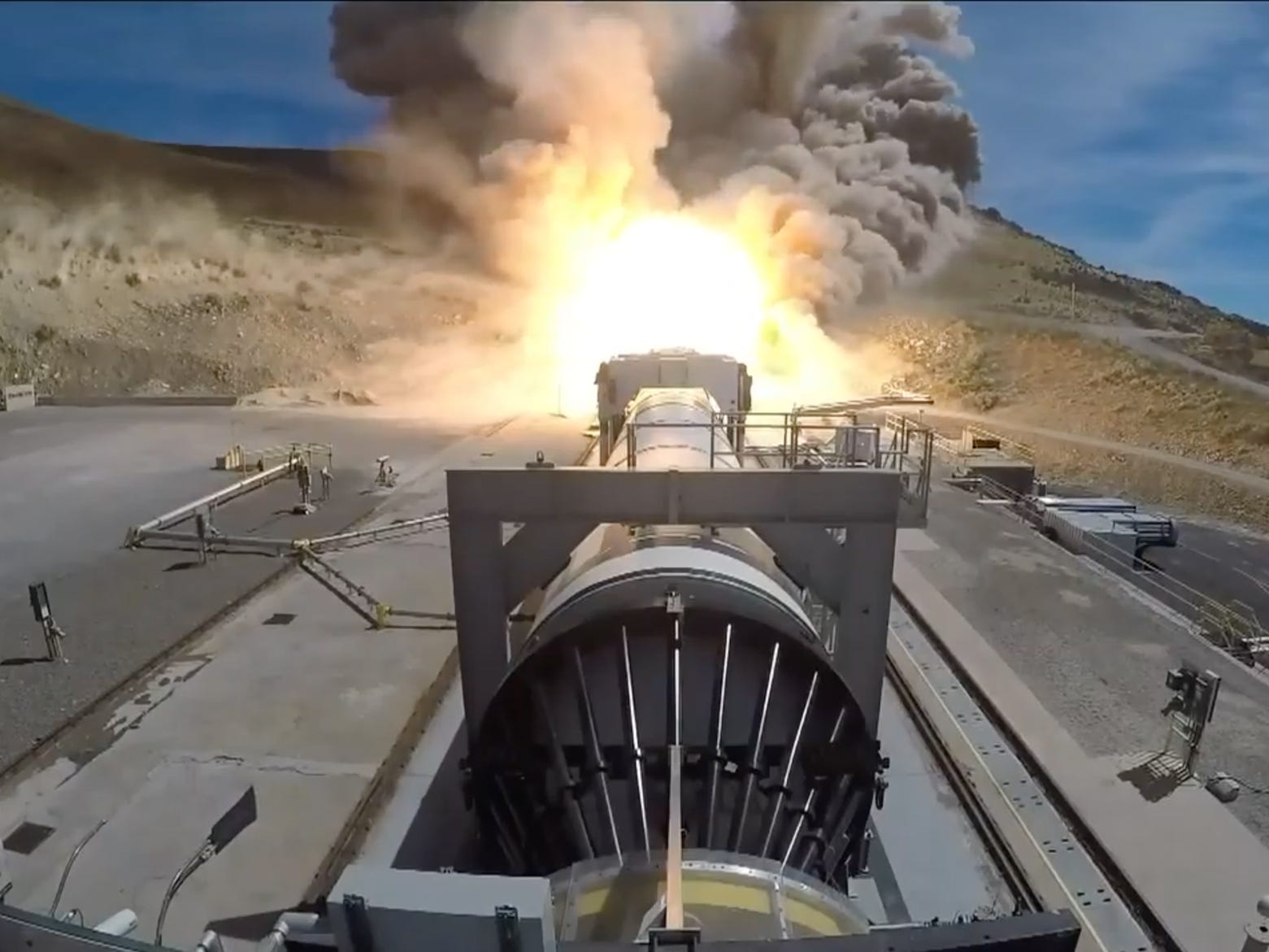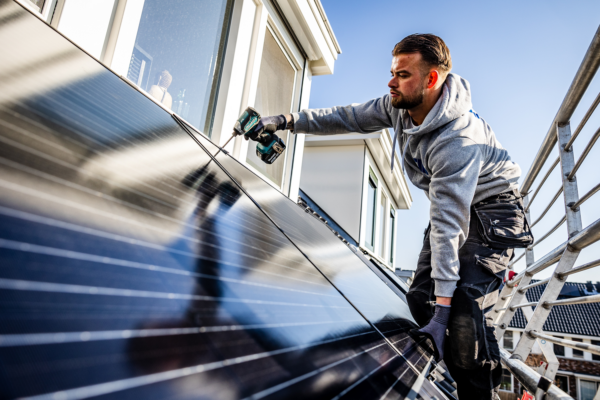Summary List Placement
With a spark, a burst of flames, and a thunderous roar on Wednesday, NASA completed a pivotal test of a rocket booster expected to power a return to the moon.
The 176-foot boosters being tested – which NASA calls “the largest, most powerful boosters ever built for flight” – are part of the agency’s Space Launch System (SLS), which it intends to use to fly astronauts to the lunar surface. It’s part of a larger program called Artemis: a roughly $30 billion effort to put boots back on the moon for the first time since the 1970s.
Wednesday’s test involved a booster prototype built by Northrop Grumman, one of several private companies NASA has contracted to build the 365-foot-tall SLS.
The prototype rumbled to life at 3:05 p.m. ET, at the company's testing facility in the hills of Promontory, Utah. It belched out an estimated 3.6 million pounds of thrust, blasting the desert with fire, smoke, and sand for 126 seconds - the exact amount of time it'd have to work during a real flight.
"The results are looking really good so far, [but] it takes us a while to dissect the information," Charlie Precourt, Northrop Grumman's vice president of propulsion systems, said during a post-test call with reporters.
A broadcast on NASA TV captured live footage of the test (below).
Testing a new moon rocket, piece by piece
NASA's Artemis program calls for SLS to launch the first woman and next man to the moon in 2024. The agency eventually plans to build a space station orbiting the moon, called the Gateway, and a permanent moon base to and from which it can regularly shuttle astronauts.
If realized as designed, SLS will be made of a small upper-stage rocket, a massive core stage, and two flight-support boosters attached to the side. Each booster is made of five segments full of solid fuel. Precourt, a former NASA astronaut, said the material has a consistency similar to a pencil eraser.
Getting the entire 2.2-million-pound system off the ground requires enormous power. Together, the twin boosters are designed to provide about 75% of the force necessary to propel the rocket during the first two minutes of flight.
After that, the spent boosters will fall away, allowing the core stage to propel the upper stage with an Orion spaceship on top. From there, Orion and its astronaut crew can chart a course to the moon.

But that's years away - first NASA must extensively test the mettle of its new launch system, including the boosters. The recent ground test was designed to expose materials or processes that need tweaking.
"This test, dubbed Flight Support Booster-1, or FSB-1, will evaluate new propellant materials and verify that all ballistic requirements of the motor are met," Northrop Grumman ballistics engineer Nikolas Ciaston said during NASA's live broadcast.
Precourt said the primarily aim was to test changes to the booster's nozzle, as well as the solid fuel itself.
Of the 30 fuel-filled segments required for the first three planned SLS flights, Precourt said Northrop Grumman has manufactured 26 and is close to finishing the other four.
However, the SLS program as a whole is already far over budget (as is NASA's other human spaceflight initiative, the Commercial Crew Program). The rocket's development cost has increased 30% since 2017, when it was estimated at $7 billion, according to a report from the US Government Accountability Office.
NASA expects to complete a crucial series of ground tests, dubbed "Green Run," this fall.
Kathy Lueders, the newly anointed manager of NASA's human spaceflight program, wrote in a blog post last month that she's "confident" the first full, uncrewed test flight of SLS could happen in November 2021. She added, however, that "it is too early to predict the full impact of COVID-19" on the program's timeline.










